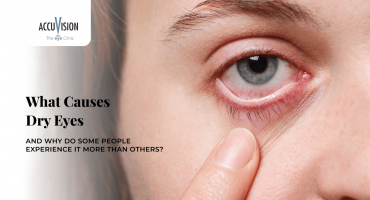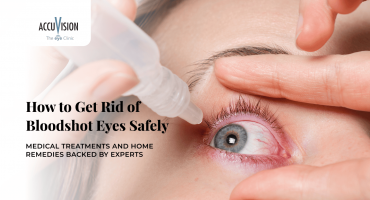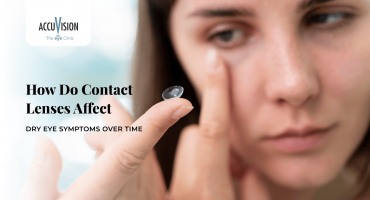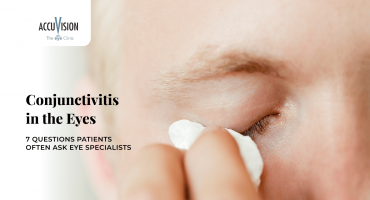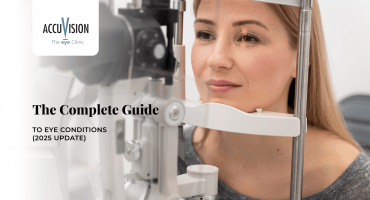- Why Eye Health Changes After 35
- Lifestyle Habits That Support Healthy Vision
- Screen Use and Eye Strain
- Simple Daily Rituals for Lasting Eye Health
- Why Regular Eye Exams Are a Must
- Conclusion
Guide to Maintaining Healthy Vision After 35
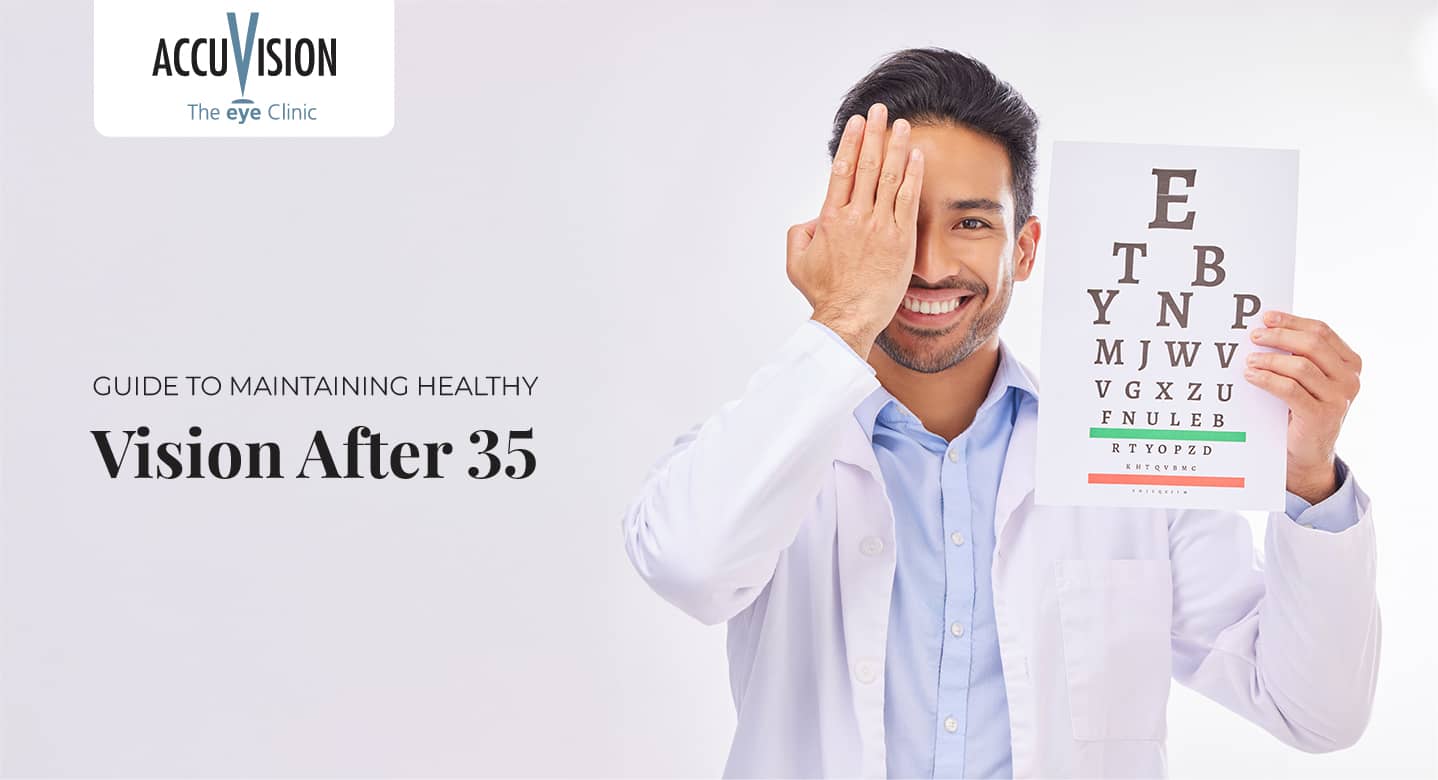
Reaching your mid-thirties marks an important milestone for eye health awareness. While healthy vision after 35 becomes increasingly crucial as our eyes naturally begin to experience subtle changes, these transitions are simply part of the normal ageing process that affects everyone. The good news is that most age-related vision changes develop gradually and can be effectively managed with the right knowledge and preventive measures.
This informative blog will provide you with evidence-based strategies for maintaining vision in your 30s and 40s, helping you preserve your eyesight and enjoy clear, comfortable vision for decades to come.
Why Eye Health Changes After 35
Understanding why our eyes change as we age helps us better prepare for these transitions. The most common change people notice is presbyopia, the gradual loss of near focusing ability that typically begins in the early to mid-forties. This occurs because the natural lens inside your eye becomes less flexible over time, making it harder to focus on close objects.
You might also notice other subtle changes: eyes may feel drier more frequently, especially during prolonged computer use, and you may experience more eye fatigue after extended visual tasks. These changes occur because tear production can decrease slightly with age, and the muscles that control eye movement may tire more easily.
Your thirties and forties are also when risk factors for conditions like glaucoma, cataracts, and age-related macular degeneration begin to accumulate. Many of these conditions develop silently in their early stages, making regular comprehensive eye examinations particularly valuable for detecting subtle changes when treatment is most effective.
Lifestyle Habits That Support Healthy Vision
Simple lifestyle choices play a big role in effective vision care after 35, helping protect against long-term conditions.
1. Nutrition for Eye Health
Your diet plays a crucial role in maintaining sharp eyesight after 35. Research consistently shows that certain nutrients can help protect against age-related eye conditions. Focus on foods rich in:
- Omega-3 fatty acids (found in salmon, sardines, flaxseeds, and walnuts) support retinal health and may reduce dry eye symptoms
- Lutein and zeaxanthin (abundant in leafy greens like spinach and kale, plus egg yolks) act as natural filters for harmful blue light.
- Vitamin C (found in citrus fruits, berries and bell peppers) supports blood vessel health in the eyes.
- Vitamin E (found in nuts, seeds and vegetable oils) provides antioxidant protection.
- Zinc (abundant in lean meats, beans and nuts) is essential for retinal health and night vision.
2. Hydration and General Health
Staying well-hydrated helps maintain healthy tear production, reducing dry eye symptoms that become more common after 35. Aim for 8-10 glasses of water daily, and consider increasing intake if you spend long hours in air-conditioned environments or experience dry eye symptoms.
3. Exercise and Circulation
Regular physical activity improves blood circulation throughout your body, including the delicate blood vessels in your eyes. Studies suggest that people who exercise regularly have lower rates of glaucoma and age-related macular degeneration.
4. Avoid Smoking
If you smoke, quitting is one of the best decisions you can make for your eye health. Research shows smoking significantly increases the risk of cataracts, age-related macular degeneration, and diabetic retinopathy. Even secondhand smoke exposure can be harmful to your eyes.
Screen Use and Eye Strain
Digital eye strain has become increasingly prevalent, especially for those juggling career demands and family responsibilities in their thirties and forties. Extended screen use can cause symptoms including tired eyes, headaches, blurred vision, and dry eyes.
The primary culprit isn’t necessarily the screens themselves, but rather how we use them. When we concentrate on digital devices, our blink rate decreases significantly, from about 15-20 blinks per minute to as few as 5 blinks per minute. This reduction in blinking leads to tear film instability and dry, uncomfortable eyes.
Practical Solutions:
- Follow the 20-20-20 rule: Every 20 minutes, look at something 20 feet away for at least 20 seconds. This gives your focusing muscles a chance to relax.
- Optimise your workspace: Position your main screen 20-26 inches from your eyes, with the top of the monitor at or slightly below eye level.
- Improve lighting: Reduce glare by positioning screens perpendicular to windows and using adjustable blinds. Consider adding a desk lamp to reduce contrast between your screen and the surrounding area.
- Artificial tears: If you experience persistent dry eye symptoms, preservative-free artificial tears can provide relief.
Making these adjustments becomes particularly important as eye health tips for over 35 focus on preventing the accumulation of strain that can contribute to more significant discomfort over time.
Simple Daily Rituals for Lasting Eye Health
Daily protective habits form the foundation of how to keep eyesight sharp after 35. These simple practices can significantly reduce your risk of eye injury and long-term damage.
1. UV Protection
Choose sunglasses that block 99-100% of both UVA and UVB rays. Ultraviolet radiation contributes to cataract formation and macular degeneration over time.
2. Proper Lighting
When reading or doing detailed work, ensure adequate lighting without harsh shadows or glare. Position light sources to illuminate your work area evenly.
3. Protective Eyewear
Sports and DIY activities pose significant risks for eye injury. Safety glasses or sports-specific protective eyewear can prevent the vast majority of eye injuries.
4. Contact Lens Hygiene
Avoid rubbing your eyes, which can introduce bacteria and cause irritation. If you wear contact lenses, maintain proper hygiene by washing your hands before handling lenses and following recommended replacement schedules.
Why Regular Eye Exams Are a Must
Regular comprehensive eye examinations are fundamental to preserving vision as you age. It is generally recommended that adults have an eye examination every two years. However, your Optometrist may suggest more frequent visits based on your individual risk factors or family history.
A comprehensive eye examination goes far beyond simply checking if you need glasses or updating your prescription. Modern eye examinations can detect early signs of over 30 different health conditions, including:
- Glaucoma: Often called the “silent thief of sight” because it typically causes no symptoms until significant vision loss has occurred.
- Diabetic retinal changes: Changes in the retinal blood vessels that can occur even before diabetes symptoms are noticeable.
- Age-related macular degeneration: The leading cause of severe vision loss in people over 50.
- Cataracts: Clouding of the natural lens that can begin developing in your forties.
Recent advances in eye examination technology, including optical coherence tomography (OCT) and digital retinal photography, allow for incredibly detailed assessment of eye health. These tools can detect changes at the cellular level, often years before they would cause noticeable vision problems.
Conclusion
Maintaining healthy vision after 35 is about developing consistent, protective habits and staying proactive about your eye health. The combination of proper nutrition, regular exercise, smart screen use, daily eye protection, and regular comprehensive eye examinations creates a strong foundation for lifelong vision health. These habits create a strong foundation for maintaining vision in your 30s and 40s and beyond. Most age-related vision changes develop slowly and can be effectively managed when detected early. Consider scheduling a comprehensive eye examination if it’s been more than two years since your last visit; it’s a valuable investment in your long-term health.
Note: This blog is for information purposes only and does not substitute professional medical advice.
FAQs:
1. How often should I get my eyes tested after 35?
Most adults benefit from an eye exam every two years. Along with regular check-ups, maintaining a healthy diet and protective habits are some of the most effective eye health tips for those over 35, helping keep your vision strong and comfortable.
2. What foods are best for healthy eyesight in my 30s and 40s?
Leafy greens, oily fish, citrus fruits, nuts, and seeds provide nutrients like omega-3s, lutein, vitamin C, and zinc that support long-term eye health.
3. Can too much screen time permanently damage my eyes?
Screens don’t cause lasting damage, but they can lead to eye strain, dryness, and headaches. Regular breaks and good lighting help ease symptoms.
4. Does exercise really help protect vision?
Yes. Regular activity improves circulation and may lower the risk of conditions such as glaucoma and age-related macular degeneration.
5. When should I seek professional help to maintain eye health after 35?
See an eye specialist if you notice sudden vision changes, flashes, new floaters, or persistent eye pain. Regular exams are still key, even without symptoms.
References:
Meier, N.F., Lee, D.-C., Sui, X. & Blair, S.N. (2018) ‘Physical Activity, Cardiorespiratory Fitness, and Incident Glaucoma’, Medicine & Science in Sports & Exercise, 50(11), pp. 2253–2258. doi: 10.1249/MSS.0000000000001692.
Lindblad, B.E., Håkansson, N. & Wolk, A. (2014) ‘Smoking Cessation and the Risk of Cataract: A Prospective Cohort Study of Cataract Extraction Among Men’, JAMA Ophthalmology, 132(3), pp. 253-257. doi: 10.1001/jamaophthalmol.2013.6669.



